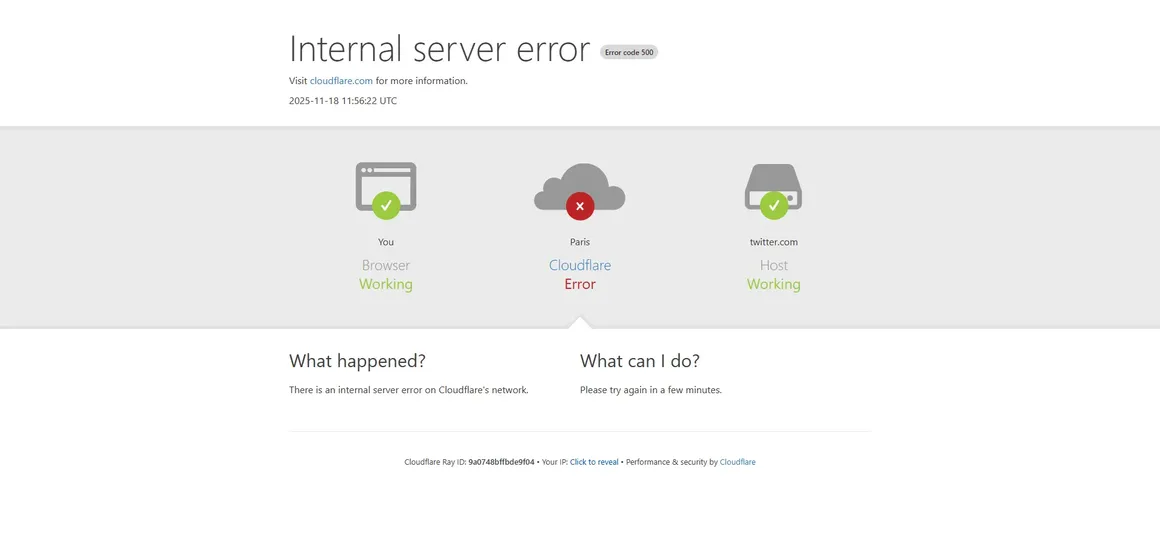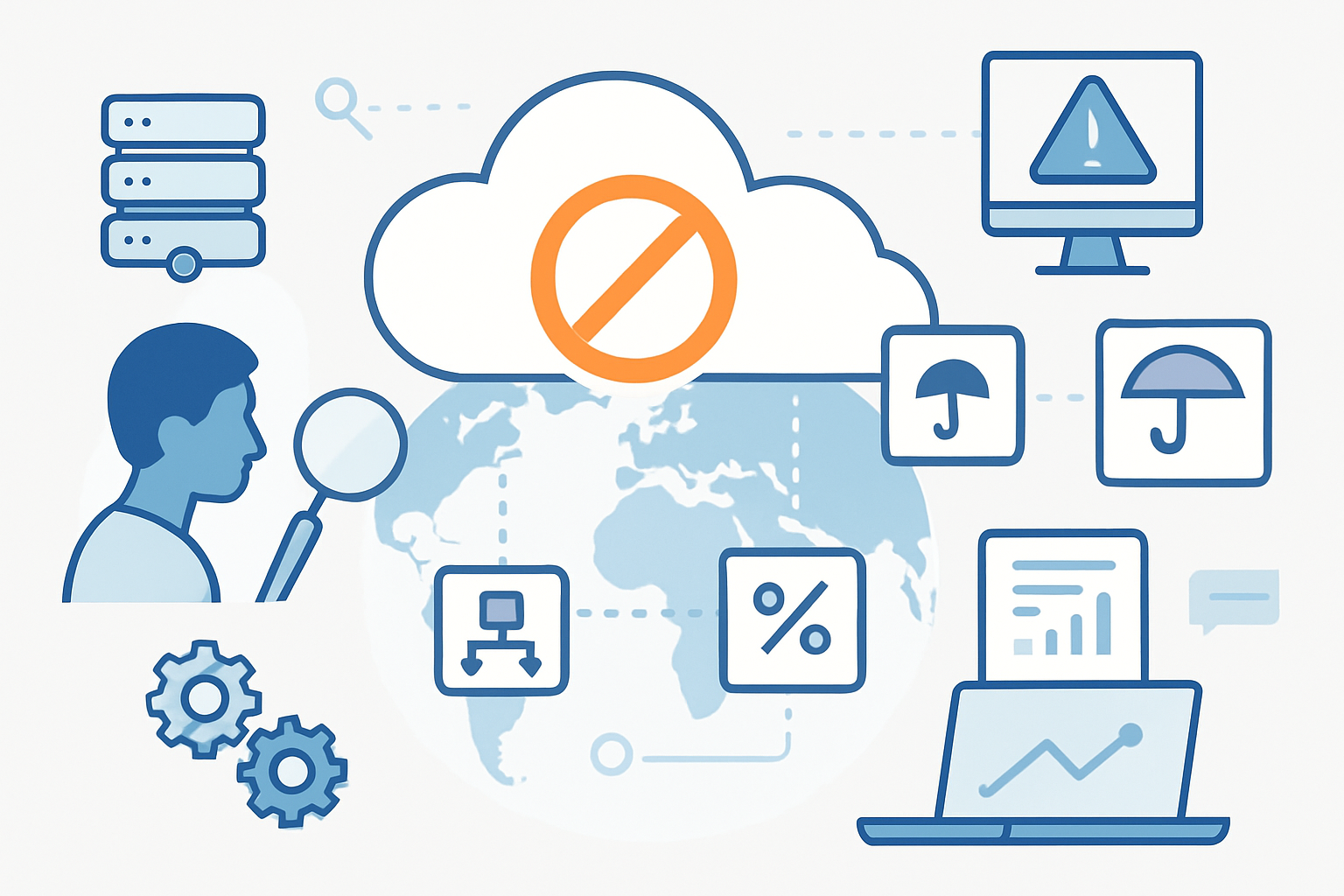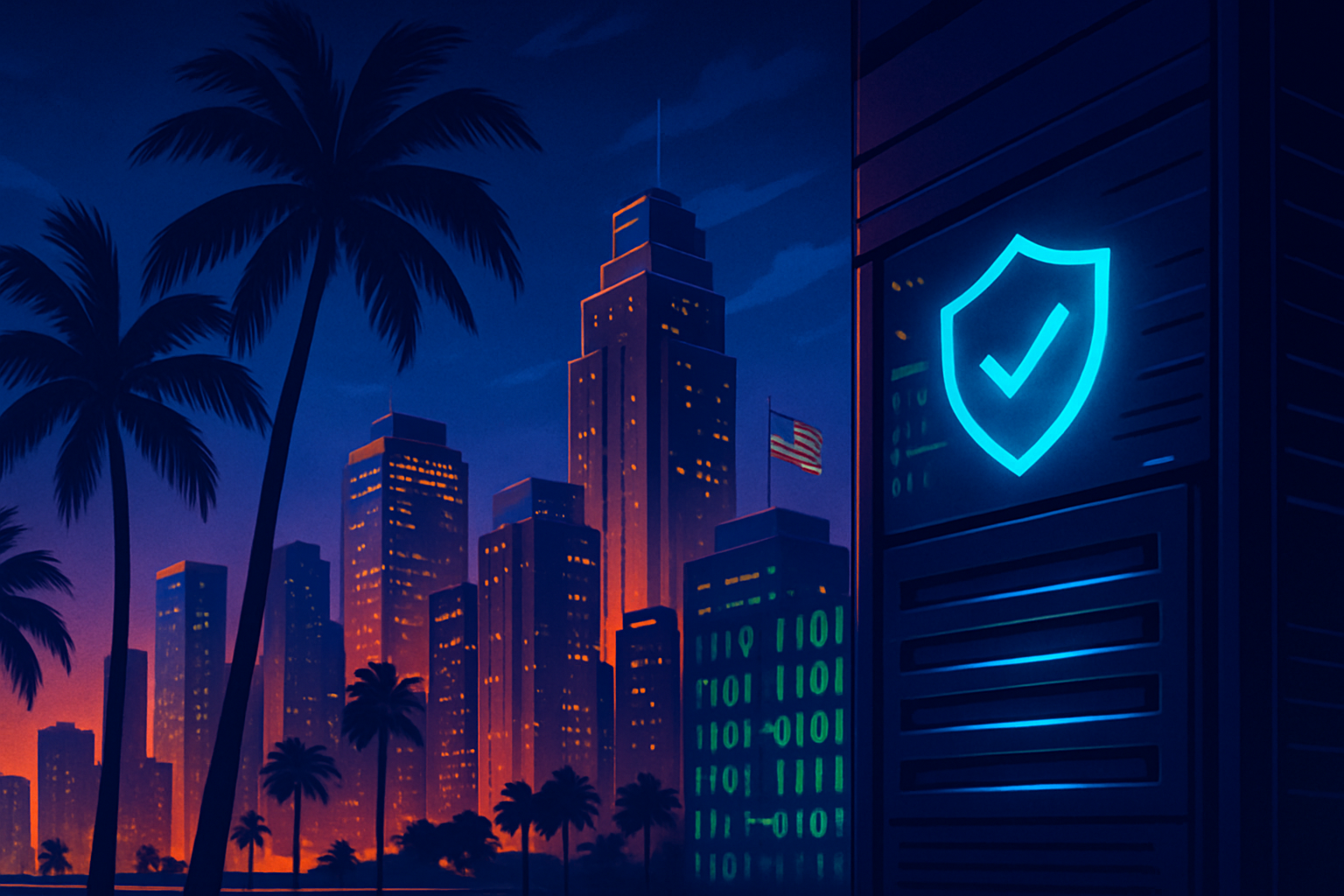Posted on November 21, 2025 at 5:00 PM
What Lessons Can We Learn from the Cloudflare Outage on November 18, 2025?

The November 18, 2025 outage will be remembered as one of the most significant infrastructure incidents of the past decade. Within minutes, thousands of websites and applications worldwide faced 5xx errors, severe slowdowns, or complete unavailability. Behind this global disruption was a widespread failure at Cloudflare, one of the central pillars of today’s Internet.
This incident highlights a fundamental truth: no organization even a global leader is immune to failure. And for any business relying directly or indirectly on critical service providers, this event is a powerful reminder of the importance of resilience, redundancy, and risk management.
1. What Really Happened on November 18, 2025
Based on the official information published after the incident, the outage was not caused by an attack, but by a chain of internal system failures:
● A permissions change triggered database anomalies
A routine update unexpectedly caused a database query to return duplicate results, which would later create a cascade of issues.
● A configuration file suddenly became abnormally large
This file, used by Cloudflare’s Bot Management system, grew far beyond its expected size—exceeding what Cloudflare’s proxies could load safely.
● An internal system limit was crossed
As the oversized file was loaded, the software hit a threshold that had been poorly handled.
Instead of falling back gracefully, it failed hard, generating large-scale HTTP 5xx errors.
● Global propagation across the network
Because Cloudflare’s infrastructure is massively distributed, the corrupted configuration propagated rapidly across regions, amplifying the impact globally.
● Thousands of applications were affected
Major web services, AI platforms, payment systems, SaaS tools, communication apps, game servers, and e-commerce platforms suffered interruptions or complete shutdowns.
● Recovery took several hours
The stable version of the configuration had to be re-propagated across the entire network, and services gradually came back online throughout the afternoon.
This incident shows that sometimes a single internal misconfiguration can escalate into a worldwide problem when it affects a highly centralized provider.
2. Why This Incident Matters to Every Business: Even If You Don’t Use Cloudflare
It’s tempting to think, “We don’t use Cloudflare, so this doesn’t concern us.”
In reality, it concerns everyone.
Here’s why:
1. Much of the Internet depends on a handful of providers
Cloudflare, AWS, Google Cloud, Azure, Fastly these infrastructures power a massive portion of global web traffic.
A failure in one can cascade far beyond its direct customers.
Even if you don’t use Cloudflare, your vendors might.
2. Your SaaS tools may depend on Cloudflare without your knowledge
Development platforms, CRMs, payment systems, analytics tools, and marketing SaaS solutions often rely on Cloudflare for performance and security.
If their provider fails, your operations fail too.
3. SLAs don’t cover business losses
Even the best SLA cannot compensate for:
- lost sales,
- frustrated users,
- damaged reputation,
- emergency operational costs.
4. Incidents like this will happen again
With increasing centralization comes a rising systemic risk.
A small internal bug can affect continents.
5. Resilience is now a competitive differentiator
Business continuity is no longer just a technical concern it’s a business advantage.
3. Five Key Lessons You Should Implement Immediately
a) Map Your Critical Dependencies
You must know exactly what your operations depend on, directly and indirectly:
- Who manages your DNS?
- Who provides your CDN?
- Do your vendors rely on Cloudflare or similar services?
- Which services would fail if one provider went offline for two hours?
- What are your business-critical workflows?
Recommendation: maintain a dynamic dependency inventory linked to internal systems and external vendors.
b) Adopt a Multi-Provider Resilience Strategy
The “one giant provider for everything” model simplifies daily operations…but dramatically increases your exposure during an outage.
Resilience strategies include:
- Using multiple DNS providers.
- Pairing a global CDN with a specialized security provider like KoDDoS.
- Hosting critical services on secure offshore infrastructure, isolated from large-scale outages.
- Implementing automated failover scenarios.
KoDDoS acts as a powerful resilience layer thanks to an independent, robust, security-focused infrastructure.
c) Regularly Test Your Incident-Response Procedures
An untested failover plan is, in practice, no plan at all.
What you should implement:
- Clear emergency playbooks with roles and responsibilities.
- Simulation exercises, such as:
“What if our CDN goes down?”
“What if our DNS becomes unreachable?” - Real tests of failover mechanisms (toward a secondary network, KoDDoS infrastructure, or alternate DNS).
These tests must be performed regularly because infrastructures evolve continuously.
d) Strengthen Your Monitoring and Alerting Systems
Internal monitoring alone is insufficient.
You need:
- External synthetic monitoring that mimics real users.
- Real-time alerts for 5xx errors, latency spikes, and service failures.
- The ability to quickly determine whether the issue is internal or tied to a provider.
- A monitoring system that is independent from the provider itself.
KoDDoS integrates advanced monitoring with 24/7 supervision from expert teams.
e) Build a Strong Crisis-Communication Framework
When an outage occurs, the way you communicate can reduce customer frustration dramatically.
Prepare ahead:
- pre-written customer and partner messages,
- a dedicated status page,
- consistent and transparent updates,
- a post-incident summary explaining preventive actions.
The goal: maintain trust, even in difficult moments.
4. Why KoDDoS Is an Ideal Partner for This New Reality
KoDDoS is globally recognized for protecting and hosting high-risk and high-exposure websites.
Our strengths include:
✔ Advanced DDoS Protection
We mitigate volumetric, complex, and multi-vector attacks in real time.
✔ Secure Hosting (VPS, Dedicated, Offshore)
Independent datacenters in Europe, USA and Asia provide resilience against outages affecting hyperscale providers.
✔ Independent Infrastructure
This makes KoDDoS an ideal resilience layer for organizations seeking to reduce over-dependence on a single global provider.
✔ 24/7 Expert Technical Support
Our security specialists are trained to intervene quickly during critical incidents.
✔ Architecture & Business Continuity Support
We help clients build:
reinforced protection layers.
multi-provider architectures,
robust failover strategies,
5. Join the KoDDoS Community on LinkedIn
To receive:
- incident analyses,
- cybersecurity insights,
- best practices,
- exclusive resources…
👉 Join KoDDoS on LinkedIn:
https://www.linkedin.com/company/koddos
And invite your peers, colleagues, and network to follow the page. Knowledge sharing strengthens the entire ecosystem.
6. Conclusion: Turning a Global Outage into a Strategic Advantage
The Cloudflare outage is not a minor glitch it’s a wake-up call for the entire industry.
The key lessons are clear:
Specialized partners like KoDDoS offer the independence and expertise needed to strengthen your infrastructure.
Even global tech giants can fail.
Depending on a single provider is a systemic risk.
Resilience requires mapping dependencies, diversifying infrastructure, testing failover, improving monitoring, and communicating clearly.
Ready to Strengthen Your Resilience?
If you want to:
- secure your online services,
- reduce dependency on a single provider,
- implement an effective failover strategy,
- benefit from high-grade DDoS protection,
- host your applications on robust, secure infrastructure…
👉 Contact the KoDDoS sales team today.
Our experts will help you design a resilient architecture suited to your business needs.








You must be logged in to post a comment.